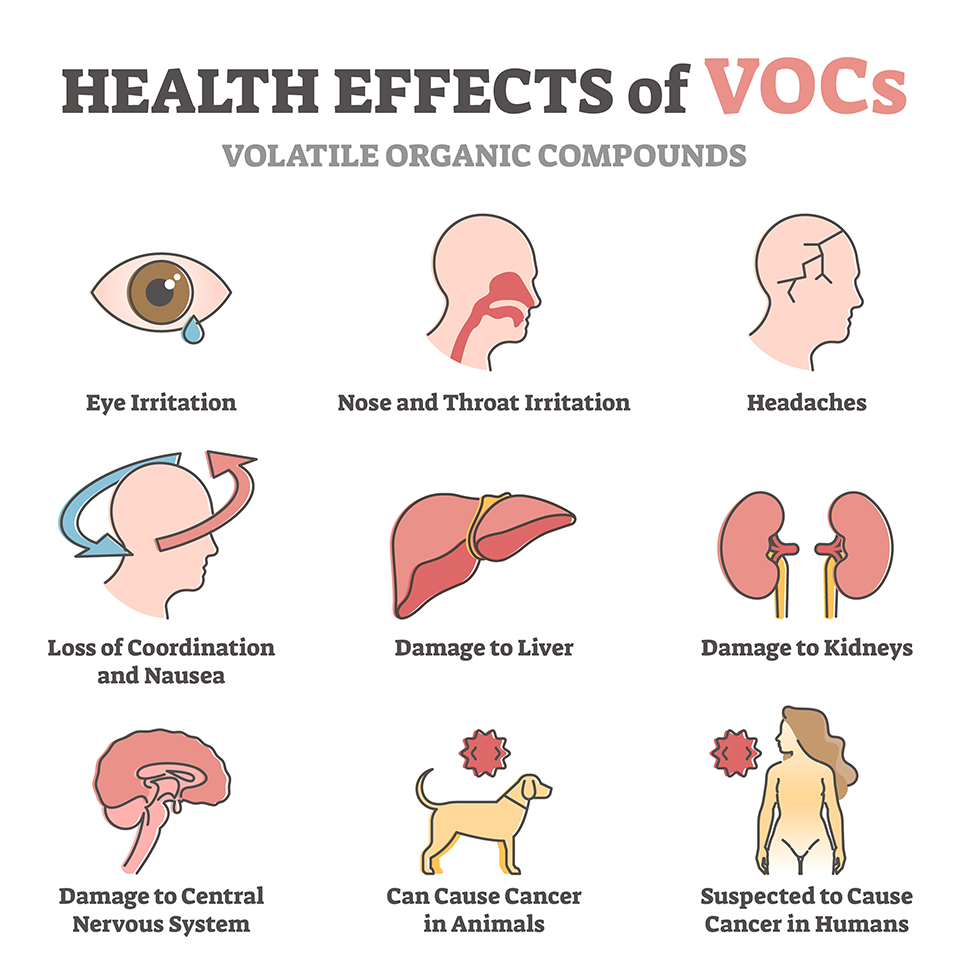VOCs in The Workplace
What are VOCs?
VOC stands for volatile organic compounds and is a term used to describe thousands of dangerous gases common in our offices and homes. Some examples are:
- Formaldehyde, found in many plastics and lacquers
- Methyl Chloride, found in many solvents and flame retardants
- Acetone, found in wallpaper and furniture polish
- Toluene, found in paints, sealants, and printing ink
- Benzene, found in glues, paints, and detergents
- Phenol, found in synthesized plastics
- Many more...
Why are VOCs Dangerous?
Breathing VOC toxins can irritate and inflame the respiratory system. Many have been found to weaken the immune system over time, the exact systems we need to protect us from COVID-19 and other flu viruses. Other symptoms associated with VOC exposure are headaches, nausea, fatigue, vomiting, nosebleeds, reduced serum cholinesterase levels (associated with chronic liver disease), and many others.

Why are VOCs Higher than Ever Indoors?
VOC levels indoors have been known to be up to 10x higher than outdoor air. But recently, those levels have elevated even further.
In an effort to combat the COVID-19 pandemic, many new cleaning policies have been adopted. Worried about preventing disease, everyone frequently and profusely cleans, releasing more VOCs into the air. While this cleaning is necessary to protect us in the short term, but without proper monitoring and ventilation, what long-term effects are the VOCs having on our bodies?

Additionally, many renovations have taken place while buildings are more accessible. New carpet, furniture, paint, and other harmful VOC sources, have been added to our workplaces. Again, this is contributing to the sharp increase in indoor VOC levels.
How to reduce VOCs
A common saying in management is "what gets measured gets managed"; this goes for air quality too! The first step to reducing VOCs is knowing where and at their present levels. Once problem areas are identified, targeted ventilation can reduce VOCs significantly.
VOCs may also be reduced in several ways, including switching to greener detergents, avoiding many plastics and paints, or moving a printer to a less occupied area.
Talk to your employer about installing VOC sensors in your office before you return. A healthier workforce should be enough of an incentive, but cleaner air may also contribute to better productivity and cognitive ability.
See Senva's VOC Products
|